

Log In. This is a story unlike any we have previously published.

It is much longer than the typical New York Times Magazine feature story; in print, it occupies an entire issue. Why Obama Has Failed To Transform the Middle East. On Flipboard. On Flipboard. Muslim 'Twoness': Fearful Of Some, Feared By Others : Code Switch. A subway ride hammers home the reality that many Muslims face: While they fear being hurt by terrorists and vigilantes, others see them as a threat.
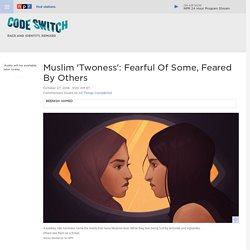
Ashley Mackenzie for NPR hide caption toggle caption Ashley Mackenzie for NPR A subway ride hammers home the reality that many Muslims face: While they fear being hurt by terrorists and vigilantes, others see them as a threat. A Real Map of the Middle East. Could this map be any more different from the previous one discussed on this blog?
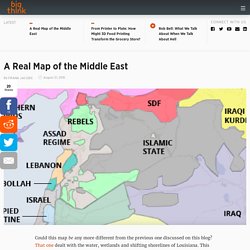
That one dealt with the water, wetlands and shifting shorelines of Louisiana. This one zooms in on lines in the sand of the Middle-Eastern desert. Yet both maps do something similar: knowing that our current maps no longer reflect reality, they replace their conventional wisdom with a new cartography, based on the new facts on the ground. For Louisiana, that means a shoreline that bites much deeper inland. Explaining the Middle East conflicts through the eyes of six individuals.
JUDY WOODRUFF: Now to the Middle East and a conversation about the chaos, calamity and political dissolution that now envelop the region.
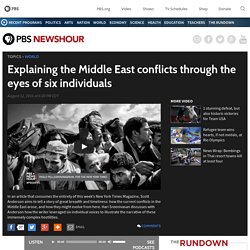
Hari Sreenivasan in New York has that. HARI SREENIVASAN: The last five years of tumult in the Middle East defy easy explanations. Revolutions that began with much hope in early 2011 have evolved into disaster in places like Syria and Libya and led to political upheaval and repression in Egypt. Explicit cookie consent. Israel, Palestinians Court Egypt’s Sisi as Broker in Peace Talks. The Journey from Syria, Part One. One afternoon last April, a Syrian jeweller named Aboud Shalhoub sat in a messy apartment in Istanbul, wrapping his legs in plastic film.

For two and a half years, Shalhoub had tried to build a life in Turkey, away from the perils of wartime Damascus, where his wife, Christine, and their two young children would remain until he could afford to relocate them. As Shalhoub learned Turkish and took on several jobs, his children came to know him mostly through Skype calls. Finally, he decided that his best option was to travel to Europe as a refugee, apply for asylum, and submit paperwork for family reunification.
If all went according to plan, his new country could facilitate travel out of Syria for Christine and the children. Architects of Failure: 100 years of Sykes-Picot. Map of the Sykes-Picot AgreementOne of the most striking observations, when comparing a map of Europe with one of the Middle East or North Africa, is how different they are.
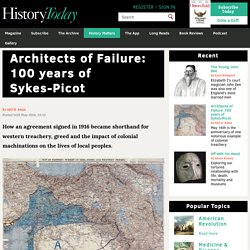
The borders of most European nation states are wonderfully convoluted, following organically ‘natural’ contours designated by geography, ethnicity, language, religion or culture. Bill Clinton’s Palestinian State. “The scope of our failure”: The real story of our decades-long foreign policy disaster that set the Middle East on fire. I first interviewed Andrew Bacevich, the soldier turned scholar, after he spoke at the Hope Club, an old-line gents’ establishment in Providence, Rhode Island.
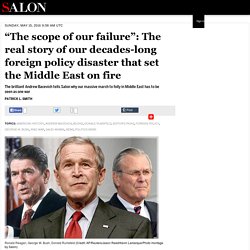
That evening he outlined a dozen or so “theses,” as he called them in honor of the 95 Luther is said to have nailed to the door of the Wittenberg Castle Church in 1517. He was in essence reading a rough outline of the manuscript then on his desk. It was a powerful presentation, and we met again in a Boston restaurant to talk shortly thereafter. This was roughly a year ago. The book Bacevich was drafting, “America’s War for the Greater Middle East: A Military History,” is now out. I drove to Boston last month to interview Bacevich again. It was interesting to hear Bacevich talk through the new book again, this time post-publication. Sykes-Picot: ′A kind of tapestry of plans and promises′ The terms of the Sykes-Picot Agreement were set forth in a letter dated May 9, 1916.
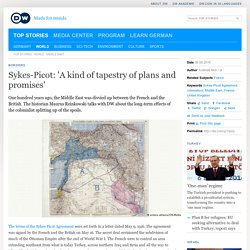
The agreement was signed by the French and the British on May 16. The secret deal envisioned the subdivision of much of the Ottoman Empire after the end of World War I. The French were to control an area extending southeast from what is today Turkey, across northern Iraq and Syria and all the way to Libya. New play about T.E Lawrence and life after Arabia opens this week. This is a sponsored post on behalf of Hampstead Theatre.
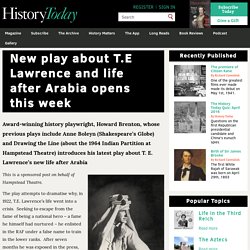
The play attempts to dramatise why, in 1922, T.E. Lawrence’s life went into a crisis. The Turmoil in the Mideast Underlines the Erosion of the Arab State System. Kanan Makiya is the author of “The Rope: A Novel,” released March 15.
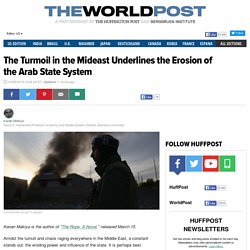
Amidst the tumult and chaos raging everywhere in the Middle East, a constant stands out: the eroding power and influence of the state. It is perhaps best described as a tendency toward erosion, even fragmentation, that seems to be underway across the region, but nowhere more so than in Arabism’s heartland — Syria and Iraq. And yet, while the whole Arab region seems to be affected to one degree or another, Turkey and Iran are not. Why? What accounts for this “Arab” exception? Censoring Palestinian Maps – Consortiumnews. Ignoring the lessons of history, the US is considering a partition of Syria.
A few weeks back I was in a mosque, decrying the scourge of sectarianism. (I’d been invited to speak, to be clear: I wasn’t just monologuing uninvited.) In too many places, I noted, Sunni and Shia Muslims are not just at odds with each other, they’re at war. To prevent similar conflicts from poisoning our own communities, American Sunnis and Shias would have to learn and work with each other. What It's Like to Teach Islam 101 When Anti-Muslim Rhetoric Runs High. In Israeli City of Haifa, a Liberal Arab Culture Blossoms. Photo HAIFA, Israel — At Elika, a bar in the Hadar neighborhood of this hilly port city, a 30-something psychodramatist rolled a cigarette and sipped coffee with her father, a well-known actor in Israel.
The bartender poured tall beers for two women who wandered in for an afternoon pint. Nearby, a 22-year-old woman with a partly shaved head and colorful tattoos sat alone, working on her laptop. How Do Sunni and Shia Islam Differ? Photo ’s execution of the Shiite cleric Sheikh Nimr al-Nimr could escalate tensions in the Muslim world even further. In the Shiite theocracy Iran, the supreme leader, Ayatollah Ali Khamenei, said on Sunday that Saudi Arabia, which is ruled by a Sunni monarchy, would face “divine vengeance” for the killing of the outspoken cleric, which was part of a mass execution of 47 men. Sheikh Nimr had advocated for greater political rights for Shiites in Saudi Arabia and surrounding countries. Saudi Arabia had accused him of inciting violence against the state. Here is a primer on the basic differences between Sunni and Shia Islam. “Why Islam? Why are Muslims considered the worst by Americans?” The questions young Muslims ask me about Donald Trump and America.
I was in Fez lecturing to university students when the news broke that Donald Trump had called for an immediate halt to Muslims entering the U.S. In order to contextualize the Republican candidate’s strange ascendency in presidential politics, I started explaining how Trump had gotten to this position of prominence and his role in reality television.